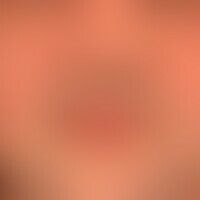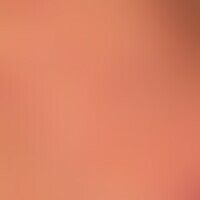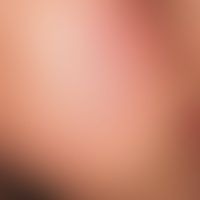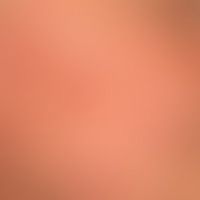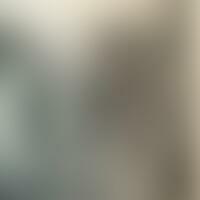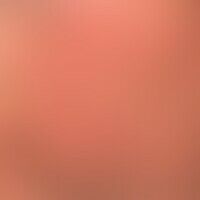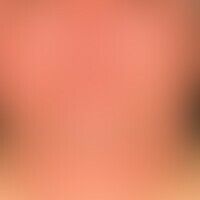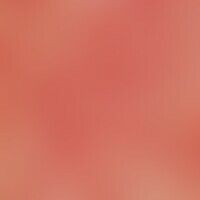
Teleangiectasia I78.8
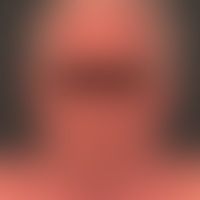
Atopic photoaggravated dermatitis L20.8
Eczema, atopic photoaggravated: Chronic persistent eczema that has existed for 2 years and exacerbates under low UV exposure.

Ulerythema ophryogenes L66.4
Ulerythema ophryogenes. scarring keratosis follicularis of the face with infestation of the eyebrows and cheeks of the child. primarily noticeable is the permanent (not itchy) extensive redness, which is sharply marked in the eyebrow area, but less in the cheek area. the patients do not perceive the process as a disease process but as cosmetically disturbing.

Mononucleosis infectious B27.9
mononucleosis, infectious. swallowing difficulties for 5-6 days; fever > 39 °C. generalized, non-itchy exanthema for 1 day. painful regional lymph nodes (neck, throat). little itchy, urticarial, small spots, confluent exanthema in places with clear accentuation of the face. no enanthema! paul bunnel reaction positive. IgG antibodies against epstein-barr virus, fourfold increase in titer every 10-14 days. detection of epstein-barr virus dna via PCR is positive.

Asymmetrical nevus flammeus Q82.5
Naevus flammeus (Port-wine stain): sharply defined red vascular nevus that affects the upper and lower eyelid as well as the temporal region.
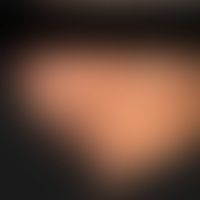
Vascular malformations Q28.88
Malformations, vascular. mixed venous/capillary malformation with predominant subcutaneous venous part.
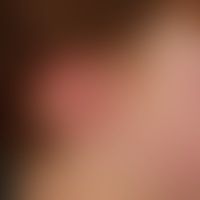
Asymmetrical nevus flammeus Q82.5
Vascular (capillary) malformation (so-called naevus flammeus): Congenital, generalized, spotty erythema from the scalp to the sole of the foot in an 8-year-old boy, developed according to age.

Rosacea erythematosa L71.8
DD: Rosacea erythematosus- here lupus pernio: 63-year-old female patient with reddish-livid plaque of the nose and previously known chronic pulmonary sarcoidosis.
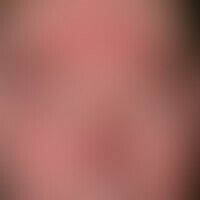
Rosacea papulopustulosa
rosacea papulopustulosa: centrofacially localized redness, inflammatory papules and pustules. infestation of the eyelids. recurrent keratoconjunctivitis.

Dermatomyositis (overview) M33.-
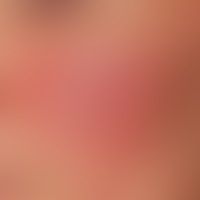
Rosacea erythematosa L71.8
rosacea erythematosa: extensive and even redness of both cheeks. alternate course of redness. intensification with slight swelling due to cold/warm change or after alcohol consumption.
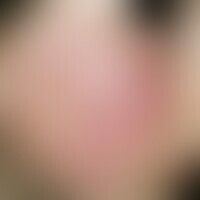
Erythema perstans faciei L53.83
Erythema perstans faciei. persistent, asymptomatic, symmetrically arranged reddening of the face, which increases with excitement and stress

Asymmetrical nevus flammeus Q82.5
Naevus flammeus lateralis: Sharply limited livid-blueish spot with increasing deepening of the colour in the area of the lateral upper lip and philtrum.

Dermatomyositis (overview) M33.-
Dermatomyositis. acutely occurring heliotropic, succulent exanthema; typical, pronounced, sharply marked, periorbital paleness. general fatigue, muscle weakness.
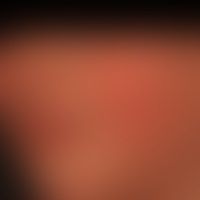
Erythema infectiosum B08.30
Erythema infectiosum: in cases of moderate feeling of illness, flat, butterfly-shaped redness and swelling of the cheeks; furthermore, exanthema of the extremities
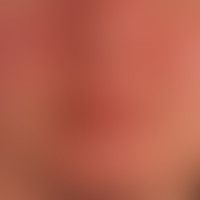
Mixed connective tissue disease M35.10
Mixed connective tissue disease: 43-year-old female patient (with clinical aspect of systemic lupus erythematosus) who fulfils the criteria of MCTD: U1.nRNP : titre : >1:1600; characteristics of systemic lupus erythematosus, Raynaud's phenomenon, swollen hands as well as feeling ill, fatigue, proximal muscle weakness (typical myositis symptoms).
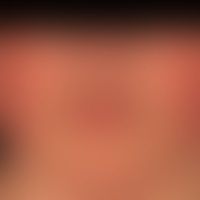
Erythema perstans faciei L53.83
erythema perstans faciei: symmetric, reddening of both cheeks. is not considered a clinical picture by the patient. furthermore signs of a distinct keratosis pilaris on both upper arms.

Ulerythema ophryogenes L66.4
Ulerythema ophryogenes: the area marked by the square shows follicular papules (keratosis follicularis) on an enlarged scale with a reddened courtyard which merges into a two-dimensional erythema.
